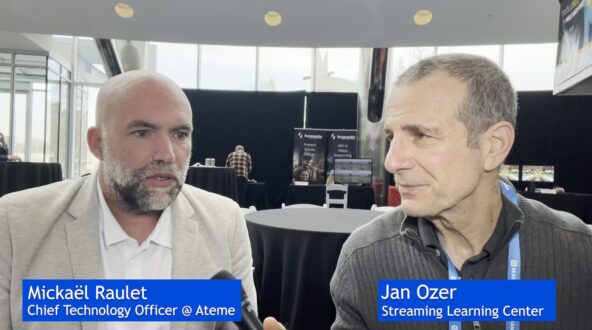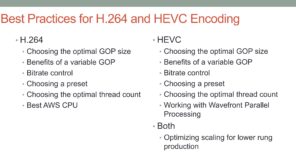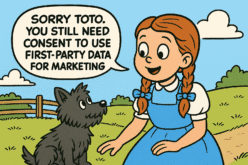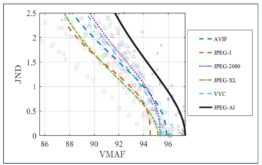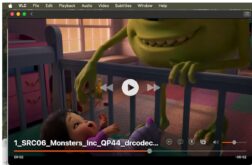In this interview from Mile High Video 2025, Jan Ozer from the Streaming Learning Center spoke with Mickaël Raulet, CTO of Ateme, about the company’s latest developments in video delivery and encoding technology. Mickaël shared his insights on emerging trends, including AI-based video encoding, advanced DRM solutions, and the growing adoption of new video codecs.
You can watch the interview on YouTube here, and it’s embedded below. Some of Mickaël’s comments are edited slightly for readability.
Contents
OTT Contribution: Replacing Satellite with Fragmented Video Delivery
Mickaël introduced OTT Contribution as “a new solution designed to replace traditional satellite delivery” at a lower cost. He described it as suitable for “both contribution and distribution,” enabling content delivery from the camera to affiliates and consumers. According to Mickaël, OTT Contribution uses “fragmented video delivery” and is codec-agnostic, supporting AVC, HEVC, VVC, AV1, and future codecs.
Explaining its flexibility, Mickaël noted, “You can change manifests on the fly… you can dynamically switch between live and pre-recorded content.” This capability allows broadcasters to mix live and on-demand content seamlessly.
Mickaël pointed out that OTT Contribution provides high-quality video with low latency while avoiding the expenses associated with traditional satellite infrastructure. He explained, “We are moving from a satellite world to an IP world… it’s a new way to distribute video efficiently.”
According to Mickaël, OTT Contribution includes advanced DRM and frequent key rotation for enhanced content protection. “If there is a compromised decoder, we can remove it from the ecosystem,” Mickaël explained. “This is crucial for protecting revenue streams… you need to make sure your content is secure.”
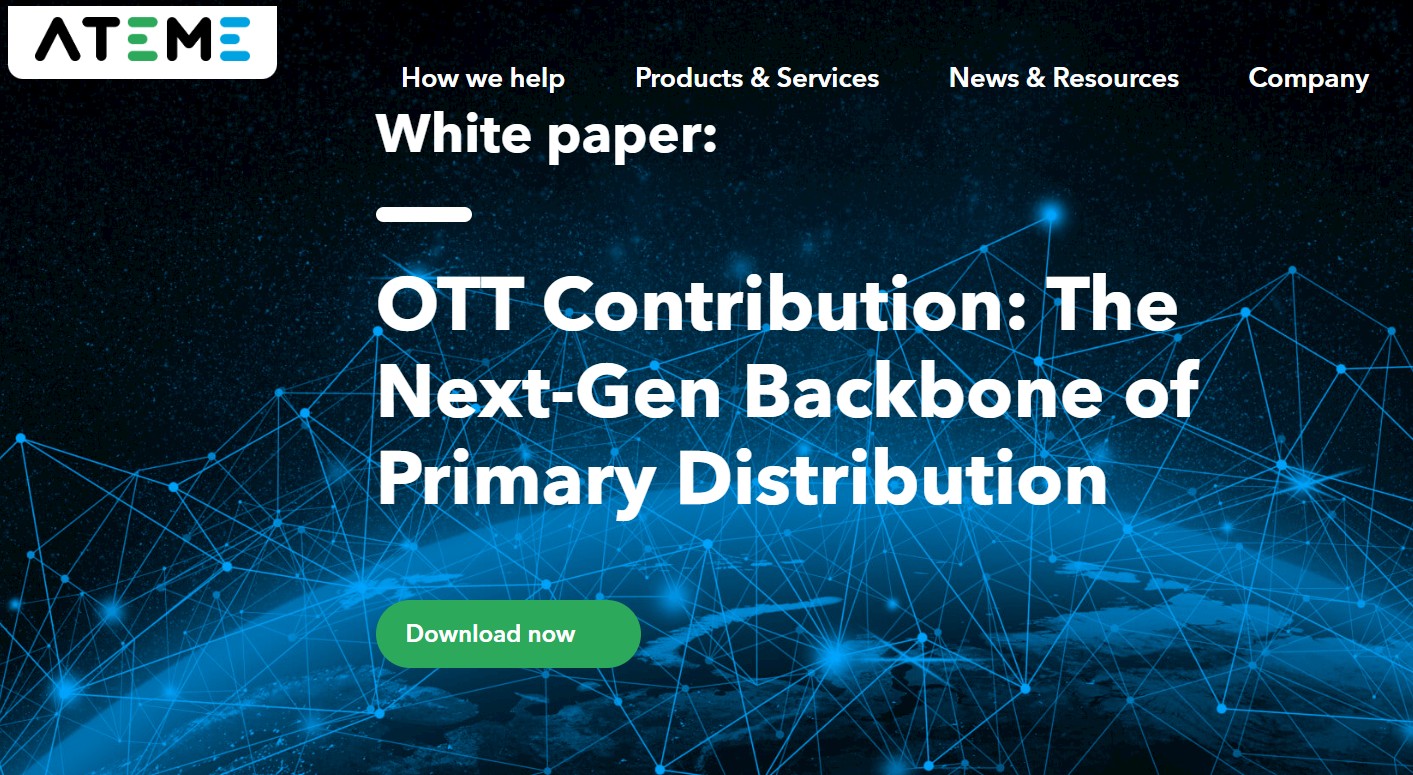
AI-Based Video Encoding: The Next Step in Video Compression
Mickaël described fully AI-based codecs as the “next future” in video compression. “We are looking at fully AI-based codecs… to see what we can get out of them,” he said, noting that AI-based codecs have the potential to enhance encoding efficiency while maintaining simple decoder requirements.
“Our focus is on keeping the complexity on the encoder side… and keeping the decoder as simple as possible,” Mickaël explained. He emphasized that this approach ensures compatibility with existing devices while leveraging AI for more efficient encoding.
Discussing the industry’s direction, Mickaël observed, “We are at a point where we can choose… traditional codecs are still progressing, but AI codecs might be the next step.” He acknowledged the uncertainty surrounding adoption timelines, saying, “It’s not clear how fast the industry will move… it could take some time.”
Adoption Trends: VVC and AV1 in Live Streaming and Broadcast
Mickaël discussed the growing adoption of VVC, particularly in Brazil’s TV 3.0 standard. “Brazil is moving to TV 3.0… and they are choosing VVC as the main codec,” he said. He noted that Ateme is seeing increasing demand for VVC in Brazil and China, adding, “We see a lot of interest in VVC… especially in China, where they are pushing for VVC deployment.”
He also commented on AV1’s rising popularity. “AV1 is being adopted for live streaming… we see a lot of traction,” Mickaël said. He explained that broadcasters use AV1 to improve video quality while reducing bandwidth usage.
Mickaël pointed out that the industry continues to use a mix of codecs, including AVC and HEVC. “There is no one-size-fits-all… it depends on the region and application,” he noted, explaining that North America favors HEVC, while other regions are exploring AV1 and VVC.
Multiview Encoding for VR Applications
Mickaël described Ateme’s work on multiview encoding for VR applications, developed in collaboration with major streaming platforms. “We started working on multiview encoding because one of our customers needed it,” he explained, noting that the project originated from a request by a large streaming customer.
The solution allows for scalable and high-quality multi-angle viewing, enhancing immersive experiences. “We didn’t have the end device… we had to develop the solution based on feedback,” Mickaël said, explaining the challenges of working without direct access to the VR hardware.
He added that the project was ultimately successful and is now used in a major VR platform. “It’s working well… we were able to deliver a scalable solution,” he stated.
Ateme’s End-to-End Control and Customer Support
When asked to distinguish Ateme’s encoders from open-source, Mickaël said, “We own our video codecs… we can make adjustments based on customer needs.” He noted that this end-to-end control enables custom optimizations and feature enhancements.
Mickaël contrasted this with open-source solutions, which he said often require more internal resources. “Our customers get support directly from the developers… that’s a big advantage,” he said, highlighting the value of dedicated customer support.
He also noted that Ateme’s end-to-end control allows for better integration with other systems, enabling faster deployment and more reliable performance. “We can provide a more consistent experience… because we control the whole chain,” Mickaël explained.
Experience at Mile High Video 2025
Commenting on the conference’s content, Mickaël said, “It’s the right mix of research and industry… it’s a great place to collaborate.” He appreciated the event’s technical depth, adding, “It’s a very technical event… the discussions are high quality.”
Mickaël observed that the conference combines academic research with industry insights, making it valuable for networking and knowledge exchange. “It’s the right people in the room… it’s great for collaboration,” he said.
Reflecting on the event’s impact, Mickaël noted, “You get a good perspective on where the industry is going… it helps to see the big picture.” He also highlighted the importance of engaging with both academic researchers and industry professionals, stating, “It’s a great place to meet people who are driving innovation.”
 Streaming Learning Center Where Streaming Professionals Learn to Excel
Streaming Learning Center Where Streaming Professionals Learn to Excel

